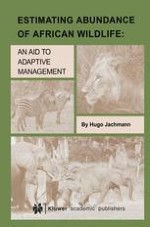2001 | Buch
Über dieses Buch
Estimating abundance of wildlife is an essential component of a wildlife research program, and a prerequisite for sound management. With the exception of a few highly mathematical volumes, there are no books on the subject for use by students and field workers. Also, the various techniques for counting animals found in scientific journals are often not accessible to African managers. The unavailability of the diverse literature necessitated the production of a textbook or field manual that covers the ground. The book compiles the most relevant techniques for counting African mammals, illustrated with many examples from the field. It provides guidelines for selecting the appropriate methodology for a range of conditions commonly found in the field, in terms of different animal species, habitat types, and management objectives.
Anzeige
